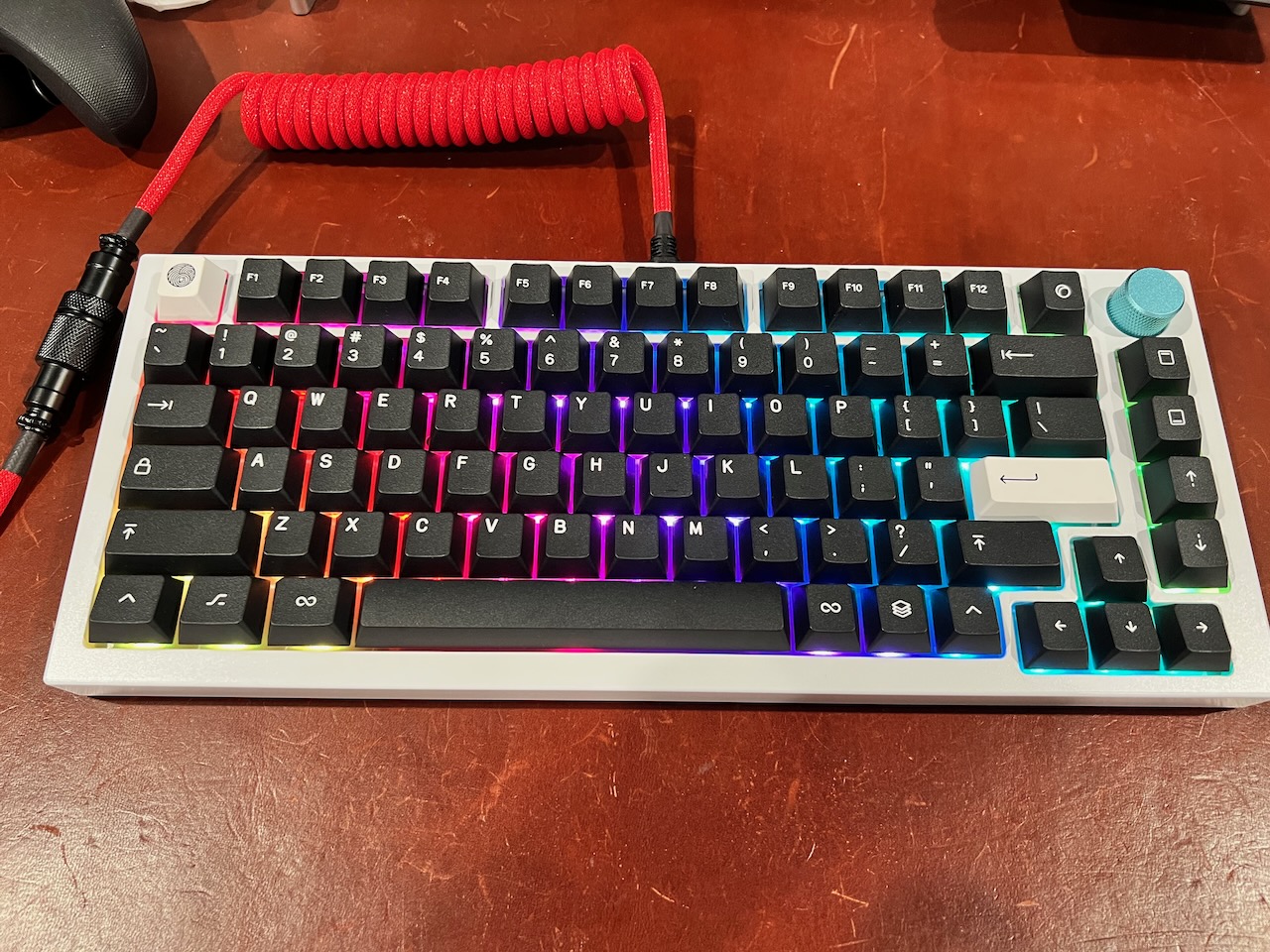I’ve geeked out on keyboards here, specifically the Kinesis Advantage line of ergonomic keyboards; I’ve also geeked out mechanical watches. So it’s inevitable, preordained even, that I’ll geek out on mechanical keyboards at some point.
It actually started when I ordered a pair of other keyboards: the Kinesis Advantage360, and AZIO Cascade. The former is a welcome update to the Advantage line of keyboards, featuring that concave split ergonomic layout with clusters of keys accessible by each thumb, now less bulky and more adjustable along updated bluetooth and supporting ZMK, open source keyboard firmware that’s now the standard for customizable keyboards. The latter is solid, compact mechanical keyboard in the popular 75% layout, portable but still retaining the crispness and satisfaction of mechanical switches. Despite the improvements that both Apple and Microsoft have made in their hardware recently—MacBooks regained proper scissor switches and the Sculpt keyboard is one of the best ergonomic keyboards available—they’re still mainstream consumer accessories.
The hobbyist term for mechanical keyboards is lovingly shortened as keebs, and although it’s hard quantify how much this niche interest has grown, the subreddit dedicated to building keyboards as seen substantial growth, particularly recently. On the hardware side, the goal is to customize how the keyboard itself looks, how keys feel when typing, along with the sounds produced when tapping on the keys. On the software side, it’s about being able to remap keys, program the matrix of LEDs within the keyboard case1, and program macros—ideally, all saved onto on-device memory to enable the full configuration to be portable.
It turns out that the software side is more straight-forward. Major manufacturers provide apps to configure their own keyboards, and there’s an increasing number of keyboards that support an open source firmware called QMK. On top of that, popular utilities exist on both Windows and MacOS2 that can further customize how the keyboard operates; I’ve been running Karabiner to remap keys and create my own shortcuts on MacOS for a few years and it works with whatever I plug in.
The hardware side is more interesting, in huge part because key feel and sound and looks are all pretty subjective, and there’s a wide range of options catering to enthusiasts looking to customize and personalize their computing battlestations. I’m hardly the expert in keeb customizations, but the basics seem to be:
- Layout, starting with the traditional full-sized 104-key setup, but with plenty of options of partial percentages like 75% or 60% or even 40% layouts that omit less-used or redundant keys;
- Switches, the primary component that affects how the keys feel when typing on them, with variations on how clicky or quiet the keys are, the overall force needed to activate the key and also how far down you need to press for that activation;
- Keycaps, the actual keys that you see on the keyboard itself, where you can customize the letters/numbers/symbols printed3, the type of material, plus the slope and shape of the keycaps. There’s even an industry of custom one-off special keycaps that keyboarders add as accent pieces to their builds.
From there, many other areas of the keyboard are available for personalization and tweaking; everything from additional knobs and dials, different case materials, added weights to stabilize the case, different materials to mount switches that produce their own sounds, mounting gaskets and noise-dampening foaming boards, plus various homemade mods with tapes and bandaids that change how the keys sound and feel. There’s even a movement—a fairly popular one in these circles—to lubricate switches for a smoother typing experience, with kits put together to aid in the time-consuming task.
In doing my research into this phenomenon, I became intrigued by how deep this rabbit hole goes. It reminds me a bit of the culture around mechanical watches—there is a lot of engineering and tinkering and materials science elevating a basic piece of hardware, but the effect of all this additional work is rather minute and totally disproportionately minor compared the resultant improvements, not to mention much more expensive4. Like watches, it’s as much an art form as it is a tool, and some people have taken to keyboard collection as its own hobby.
I ended up building a keyboard out of the popular and beginner-friendly GMMK Pro. It’s a 75% layout keyboard with a rotary knob, and I customized the color combinations to something I wouldn’t mind looking at. The keycap set is the White on Black (Series 1) from Monokei, and they rest on top of the highly-rated Glorious Panda switches, each of which I took apart to apply lube5. I’m happy to report that after a weekend of monotony6, everything came together and worked on the first try. I did have to tweak a couple of switches by re-lubing them and adjusted a particularly stubborn stabilizer on my left shift key, but that’s part of the fun of building a keyboard out of modular parts, being able to tinker and refine small things to my heart’s content.
Of course, now armed with the most basic of knowledge on keebs, I can’t help but eye all the keycap sets, switch types, and interesting layouts designed and manufactured by long-time keyboard enthusiasts. I should probably stop typing and close out those browser tabs.
The keyboard community overlaps heavily with the gaming community, and share their love of bright lights.↩
I’m sure there’s even more tools on UNIX/Linux, but it’s been a long time since I’ve run a Linux desktop.↩
Bespoke keyboard components have this added challenge that they’re often produced in limited runs and require minimum orders, so enthusiasts pool together and set up group buys, throwing down money for preorders that don’t get fulfilled for months or longer.↩
Yes, a lot of the names for things in the mechanical keyboard world sound silly.↩
Which was self-driven; I figured that if I was going to get into this hobby, I might as well go all-in.↩



